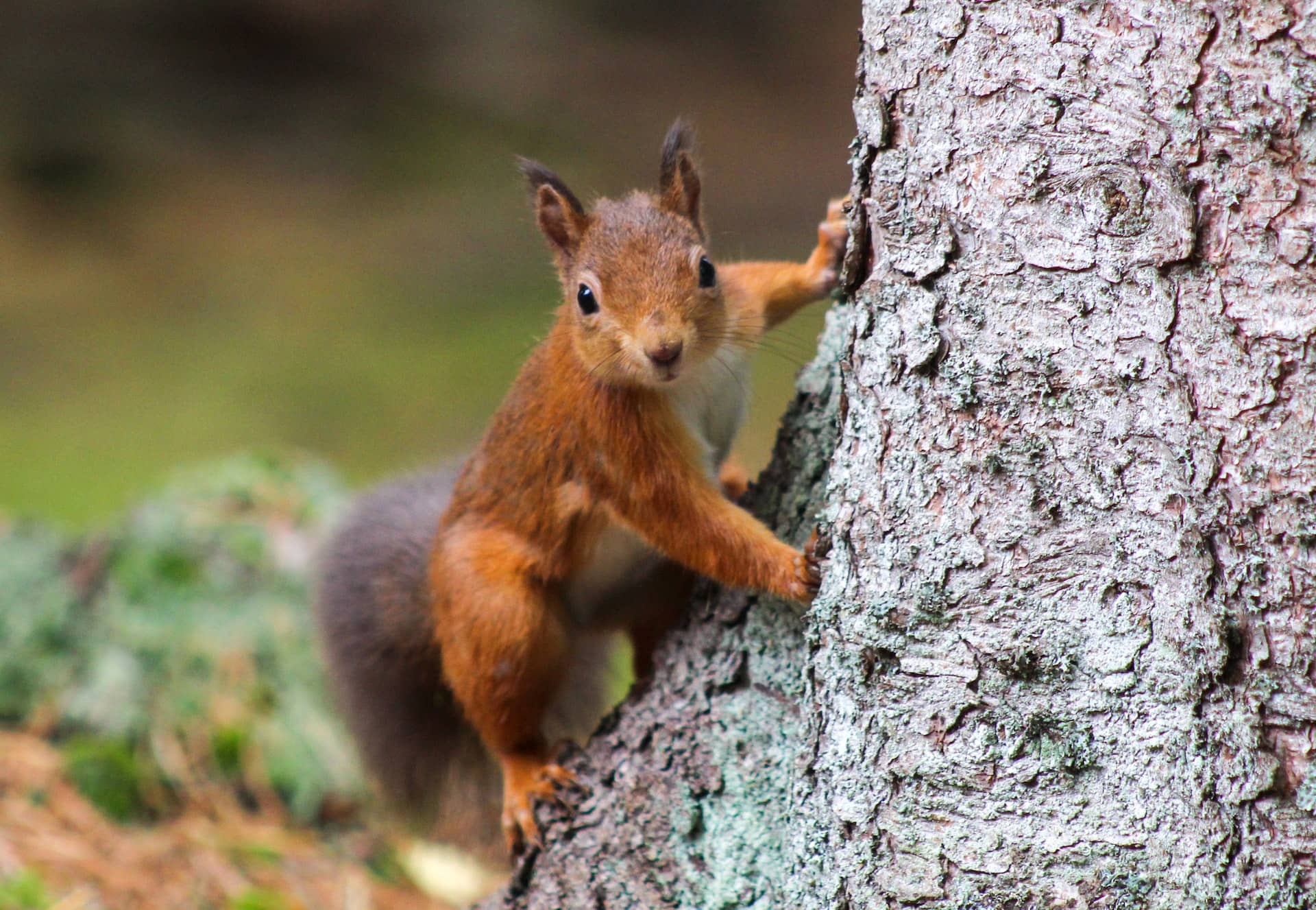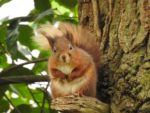Over the last 150 years, England’s red squirrel, Sciurus vulgaris, populations have significantly declined. This iconic species is now classed as nationally endangered.
Evidence shows that the expansion of grey squirrel populations and range are the main cause of local red squirrel extinctions.
Red Squirrel Appreciation Day
On Red Squirrel Appreciation Day, 21st January 2023, the UK Squirrel Accord (UKSA) launches a new action plan to help protect and enhance England’s endangered red squirrels.
This will make a positive contribution to the dedicated conservation efforts already taking place and compliment the red squirrel action plan or strategies underway in Scotland, Wales and Northern Ireland.
Red Squirrel Action Plan
The England Red Squirrel Action Plan (ERSAP) 2023-2028 has four key aims:
- Protect, identify and strengthen red squirrel populations across the current range
- Expand the current range of red squirrels
- Support and improve collaborative action at all levels
- Promote better understanding and support for red squirrel conservation across England
Delivering the actions needed at the scale required to achieve these goals is a complex and significant challenge. The ERSAP provides a framework of strategic actions to underpin and guide red squirrel conservation and recovery in England.
Strong collaboration at all levels
Successful delivery of the plan will depend on strong collaboration between stakeholders at local and national levels, including community groups, conservation organisations and government agencies.
Effective communications that raise awareness of and engagement in red squirrel conservation are also vital. A new stakeholder group is being set up to start delivering the actions.
Reviewed in five years
The plan will be reviewed and updated in five years. During this time UKSA will work with various stakeholders to achieve an increase in red squirrel range and time spent conserving red squirrels.
The government, alongside the Forestry Commission and Natural England, has worked with others in the UKSA partnership to develop the action plan and will support its implementation through actions such as habitat creation to protect the long-term future of this iconic species.
Haw: Human actions that can reverse their fate
Kay Haw, Director of the UK Squirrel Accord, said,
“Red squirrels are an important part of England’s natural heritage. Working together we can ensure they have a positive future by mitigating the tragic declines in their numbers.
“While human actions endangered these much-loved mammals, it is also human actions that can reverse their fate.
“It is only thanks to the fantastic efforts of all those involved in red squirrel conservation that we still see them on the English mainland today.
“The new England Red Squirrel Action Plan aims to build on this valuable work and ensure our only native squirrel survives for future generations.”
Kinnoull: Integral to our woodland ecosystems
Lord Kinnoull DL, Chair of the Red Squirrel Survival Trust, said,
“We must halt the loss of biodiversity we are sadly witnessing in England. As well as bringing much joy to people’s lives, red squirrels are integral to our woodland ecosystems and support the natural regeneration of our woods.
“We believe the England Red Squirrel Action Plan will enhance the admirable efforts of all those who have been working for years to protect our native red squirrels from introduced grey squirrels. We encourage everyone to support it, to get involved however you can and spread the message far and wide.
“We all look forward to a day when our woods turn red again with these beautiful creatures.”
Denbury: Using existing knowledge and experience to act as a catalyst for change
Mike Denbury, Project Manager of Red Squirrels Northern England, said,
“The England Red Squirrel Action Plan provides a much-needed framework to guide red squirrel conservation at a time when the threat of extinction is very much a reality.
“The plan sets out core objectives to use existing knowledge and experience to act as a catalyst for change. It aims to raise awareness of the threat to red squirrels and bring this important message to new audiences.
“The plan also welcomes collaboration with and work alongside the organisations and community groups that are working tirelessly to ensure the recovery of this iconic species.”
Walter: A strategy that can be used by volunteers and groups
David Walter, Volunteer Advocate for the UK Squirrel Accord, said,
“Over the years many individuals and local Red Squirrel groups have been working away doing their bit for Red Squirrel conservation.
“It has been a privilege as a volunteer to have been involved in undertaking grey control in various woodland areas and to have witnessed the return of Red Squirrels into areas where they have not been seen for many years.
“The English Red Squirrel Action Plan will now provide a strategy that can be used by volunteers and groups to further the aim of Red Squirrel Conservation. As a volunteer I’m looking forward to seeing the stabilisation of existing Red Squirrel populations and their expansion into new territories.”
Harrison: Committed to supporting the Red Squirrel’s recovery
Environment Minister, Trudy Harrison, said,
“Red squirrels are such striking and wonderful animals, and much loved by the British public. The government is absolutely committed to supporting their recovery.
“We have made legal and binding commitments to create thousands of hectares of new wildlife-rich habitat under the Environment Act and are supporting urgent measures to reduce the threat posed by grey squirrels.
“I’m very lucky to represent an area in Cumbria with a population of red squirrels, and I look forward to working with organisations including the UK Squirrel Accord as they take forward work to deliver on this plan.”
Protected under Wildlife and Countryside Act
Red squirrels are protected under Schedules 5 and 6 of the Wildlife and Countryside Act (1981 and as amended).
The UK Government’s A Green Future: Our 25 Year Plan to improve the environment is an important policy driver of red squirrel conservation. As a key goal for the 25-Year Plan is to achieve ‘thriving plants and wildlife’.
Threat of grey squirrels
In England, grey squirrels are the greatest threat to red squirrel survival. Greys were introduced from North America from 1876 and are larger and more aggressive.
They outcompete reds for food and habitat, and carry squirrelpox virus that they do not contract, but which is almost always fatal to reds. Red squirrels will only survive if grey squirrel populations are effectively managed.
News shared by Graham on behalf of UK Squirrel Accord (UKSA). Ed
Image: Pearse O’Halloran under CC BY 2.0





